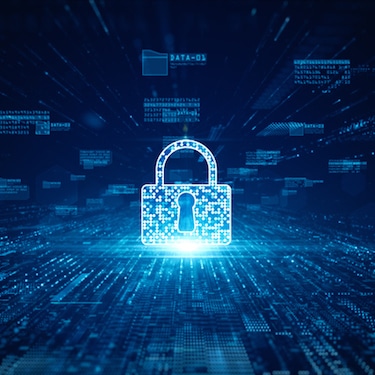
Industry 4.0 is changing the way manufacturers think about data security. In the past, the IT and OT environments were completely distinct. Factories were largely stand-alone with only controlled communication between systems. Not anymore. Today, huge amounts of data are being generated and shared in operations through Industry 4.0 technology such as the IIoT, the Cloud, Digital Threads, and real-time data analytics. Today there is a heightened need for cybersecurity.
Unfortunately, all this new technology and data collection have given cybercriminals new avenues of attack. And cyberattacks are not a distant threat. Recall the Colonial Pipeline attack, which suddenly impacted communities across the U.S. That incident is a painful reminder that cybercriminals are innovative and organized – and so too must be your defense. Yet despite this new reality, many industrial enterprises have been slow to respond, often leaving OT security to facilities teams to address.
Learn more from this article, Recent Ransomware Attacks Against Manufacturers Highlight the Need for Business/Government Security Collaboration
There is no simple solution to protecting your organization’s security. Modern manufacturers are combining layers of intelligent, high-tech security with a culture of workplace data security and training among employees. Although every situation is different, here are five things you can do to help better secure your data in an Industry 4.0 world.
1. Make a Commitment to Cybersecurity
An OT cyberattack poses potential catastrophic effects on worker safety, environmental exposure, and the financial impact of production interruption. If your organization is still using legacy systems, then that means it has a security vulnerability. It is time to commit to a serious technology update. Experts warn against trying to “paint-on” security over a legacy system. This approach is far more expensive than building a brand-new security system and far less effective.
Redoing the cybersecurity infrastructure allows for in-depth defense: the ability to monitor and protect the most important data, and then cascade out to all the lesser vulnerabilities. It includes the ability to look at system-level security, and then monitor and allocate resources accordingly to make informed decisions in the real world. You can rest assured that cybercriminals will become even more clever and dangerous in the coming years. Maintaining current software patches, version updates, and security improvements can be your organization’s best investment for the future.
2. Build Security End-to-End
As manufacturers add new access points and new technology, they come with increased cyber risk. 5G technology with built-in security is more secure than most legacy systems, but it is not enough by itself. Connecting SCADA, new IoT centers, and edge computing all carry risks. The reality is that you cannot manage the security of each individual device. For example, many OT manufacturing devices complete firmware and application updates by USB. Unfortunately, this practice does not maintain a secure “air gap.” Ask yourself: are we really protecting our devices? Who can come in and access the devices? Are they using secure processes? If you are not sure of the answers, then your organization might then not be fully secure.
What’s needed is a holistic approach to data security. The Cloud provides security for the data it handles, but the enterprise still needs to maintain its own end-to-end security controls, regardless of whether you operate in a Cloud or hybrid environment. A good practice is to create private networks within the larger ecosystem to isolate areas, allowing you to slice network flow into different parts. For example, mission-critical applications can have one flow and end-users another, so there is limited impact in the event of a security breach. Whatever method you choose, your defense systems should be both broad and deep.
3. Include the Supply Chain and Partners
Manufacturers need to understand not only their own security procedures, but those of their suppliers, partners, and customers. As more activities become interconnected beyond the “four walls,” extended security becomes ever more important. Meanwhile, your vendors and suppliers are vetting you with the same questions or should be. Does this company have strong cybersecurity technology and procedures in place? Can we trust doing business with them? Make sure you and your suppliers share a common vision and commitment to cybersecurity.
4. Plan for the Worst
Organizations should prepare for their worst day – a ransomware attack, DOS, data leak, or another serious attack. We may even see AI used to supercharge cyber threats. What could be the impact of such an attack? Who will decide if operations must shut down production? If production is shut down, what will the effects be? Manufacturers should have a detailed plan in place before anything happens, to best prepare for these situations. This includes media training and preparing who will communicate to the public and customers. Manufacturers should conduct regular practice runs on dealing with worst-day cyberattack scenarios. You don’t want to be figuring out what to do the day that it happens.
5. Last, but not Least: Start at the Top
As with all major initiatives, your workforce won’t buy into proper security unless it starts at the top. The CEO and the board must preach security to the entire organization. More than that, they must drive the necessary investments of resources and capital. Cybersecurity should be a top priority for both IT and OT and for every member of the organization who handles information – which is everyone in a modern enterprise.
Like most things in life, there is no silver bullet that will solve the cybersecurity challenge. It won’t go away, either. As infrastructure changes and evolves, manufacturers will have to continually adapt to the attacker and stay one step ahead. It’s the price we pay for living in a world that is increasingly interconnected and collaborative. But by taking the proper steps today, enterprises will be able to reap the benefits of Industry 4.0 while keeping the risks to a minimum.






